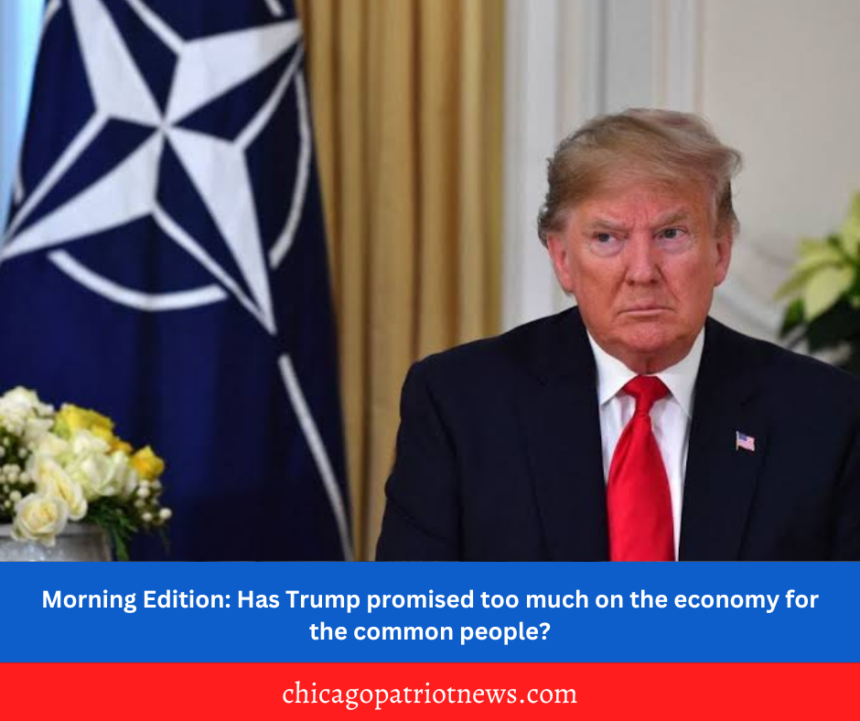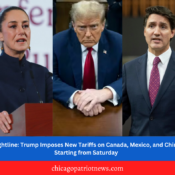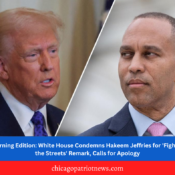Chicago – February 01, 2025
Donald Trump has promised big changes for the world’s largest economy.
Ahead of the election Trump promised action in five main economic policy areas. He pledged tax cuts resulting in a stimulus of up to $8–10 trillion, to impose 10–20 per cent tariffs against all US trading partners and 60 per cent against China, to deport up to 11 million undocumented migrants, to unleash a wave of economic deregulation and to reform radically the federal bureaucracy, improving efficiency and cutting ‘enormous amounts’ of waste. He also promised to roll back the Biden administration’s pro-climate policies, to end the war in Ukraine and to double down on efforts to constrain China’s access to US technology.
This combination, he says, will ignite an economic boom and revive withering faith in the American dream.
But looming over the president-elect are warnings that many of his policies are more likely to hurt the economy than help it.
And as he prepares to set his plans in motion, analysts say he is about to run into political and economic realities that will make it hard to deliver all his promises. There’s no clear path forward at this time for how to meet all these goals because they’re inherently contradictory.
Over 80 per cent of federal government expenditure comprises payments for social security, Medicare, defence, debt interest and transfers to states. These areas are either mandatory or largely untouchable politically, leaving just $1.1 trillion to absorb cuts.
Much of this spending is vital to the operation of the US economy or has strong political support. So the scope for Trump to make significant savings in federal spending appears limited.
A renewed surge in US public debt relative to GDP (currently at 120 per cent) is therefore more likely. This will probably not have significant short-term economic consequences given the strength of international demand for US assets.
There is arguably more scope to make an impact through deregulation, given Republican control of Congress and Trump’s role in appointing the chief regulators. Rolling back financial regulations implemented after the global financial crisis looks to be the priority, along with steps to reduce constraints on cryptocurrencies.
The net result of all this could be increased inflationary pressures, a slower pace of Fed interest-rate reductions, and some cooling in growth, bringing it back to the US trend rate of 2–2.5 per cent in 2025. But the long-term economic implications of Trump’s domestic and international governance agenda could be a lot more serious.
How will Trump’s economic policies effect the working class?
Trump promised not to “cut one penny” from Social Security, according to his policy platform. But he has proposed eliminating federal taxes on Social Security, tips and overtime pay. Tax revenue is used to fund federal aid programs like Social Security.
Eliminating the taxes would provide short-term relief but deplete funds for Social Security, according to the Tax Policy Center, leading to reduced benefits for workers.
Households making $32,000 or less would not benefit from the federal tax cut because the majority of their Social Security income is not taxed, according to the Tax Policy Center.
Concerns about inflation helped send Trump back to the White House. Yet under his proposed policies, inflation could come roaring back.
Trump’s proposed 10% to 20% tariffs on imports would lead to an increase in everyday consumer prices, according to a report by the National Retail Federation. For example, $90 athletic shoes could cost $106 to $116 under Trump’s tariffs.
Additionally, Trump’s proposal for mass deportations could increase food prices. Auerbach noted that undocumented immigrants often work in agriculture or food processing, portending for a labor shortage if they are deported.
Auerbach told CNN that the president-elect’s plans for tariffs and mass deportations could have the most significant impact on peoples’ finances.
“If those things actually come into effect as proposed, there are going to be big increases in the cost of living,” he said.






